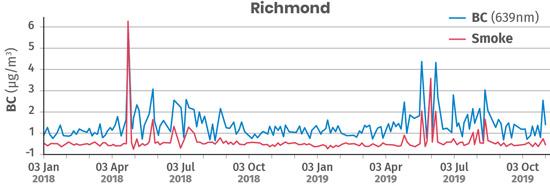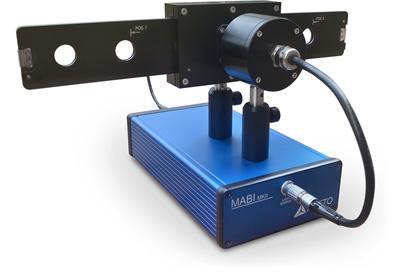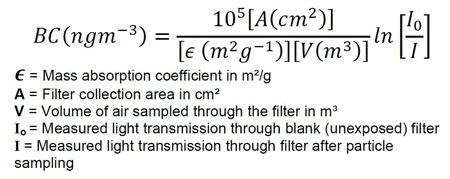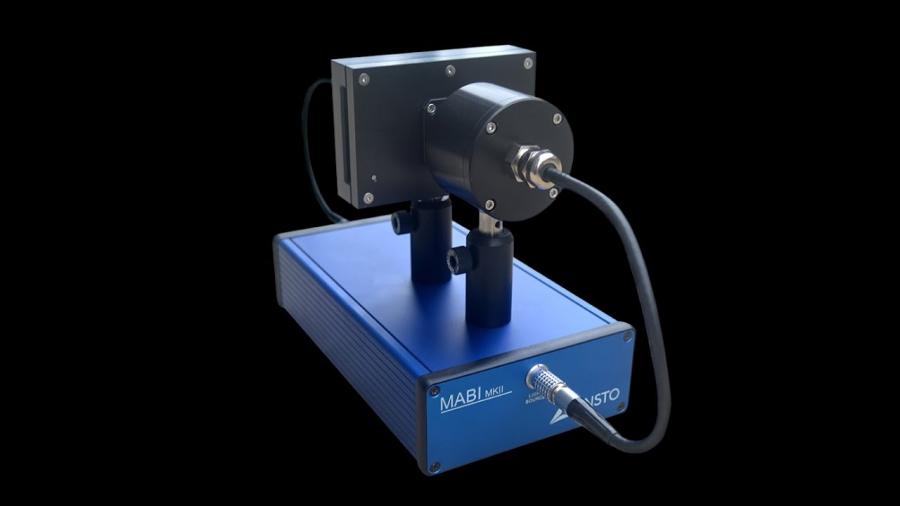

MABI Multi-wavelength absorption black carbon instrument
ANSTO has developed a new portable instrument, MABI, to determine both precisely and accurately the concentration and source of black carbon in air pollution. The new instrument can be purchased directly from Thomson Environmental Systems.
Black carbon is one of the most significant constituents of atmospheric fine particle pollution. It has impacts on health and climate change


Graph comparing BC concentration obtained from 639nm MABI data
in blue with (375nm minus 940nm) MABI data in red. The BC peaks
seen in the red plot are from biomass burning while the BC peaks
in the blue plot are from motor vehicles
Using typical aerosol filter samples, the Multi-wavelength Absorption Black carbon Instrument (MABI) measures light absorption at seven different wavelengths.
As black carbon can be emitted from a range of different sources, primarily either diesel vehicles of biomass burning, particles have a range of densities and sizes.
When the black carbon concentration equation is modified to include contributions relating to the size and density of the particles, a more accurate measurement is acquired.
Spanning ultraviolet to infrared wavelengths, the measurements can be used to differentiate the contribution from different sources.
Key features of the unit

- Small desktop size (portable)
- Connects directly to your computer's USB port
- Designed specifically for typical aerosol filter samples (47mm polycarbonate, 47mm Teflon, 25mm stretched Teflon, etc.)
- Non-destructive, filters can be further analysed with other techniques, such as IBA or XRF
- Fast, takes less than 35 seconds to complete a 7 wavelength measurement
- Provided with digital acquisition software
Calculations
The concentration of black carbon concentration is generally determined using this equation

Although single-wavelength light absorption methods are widely used and accepted to determine the concentration of black carbon, the result may be inaccurate. Black carbon can be emitted from a range of different sources and have a range of different densities and sizes. The mass absorption coefficient is wavelength and density-dependent.
MABI measures light transmission at seven different wavelengths to address the limitation of single wavelength methods. The user performs the black carbon calculation, ensuring full control and understanding in the interpretation of values.
Specifications
| LED Wavelengths | 405nm, 465nm, 525nm, 639nm, 870nm, 940nm and 1050nm |
|---|---|
| Power supply | Data communication and power supply is provided to the MABI via a Universal Serial Bus (USB) cable |
| Filter holders | 25mm and 47mm filter holders are provided. Additional filter holder sizes may be provided on request. |
| Computer requirement | The instrument requires a minimum of Microsoft Windows 7 or higher |
| Data format | Data output is provided in cvs file formal, which can be easily imported into programs such as EXCEL |
The MABI Usage Training Video
Watch a Clean Air Society of Australian and New Zealand (CASANZ) Webinar, with Prof David Cohen, on how to calculate the absorption coefficient (babs) and the black carbon concentrations on a filter using the ANSTO MABI instrument. Note: Watch in Chrome for better viewing. Maximise YouTube window. Duration: is approximately 1 :09 hr.





